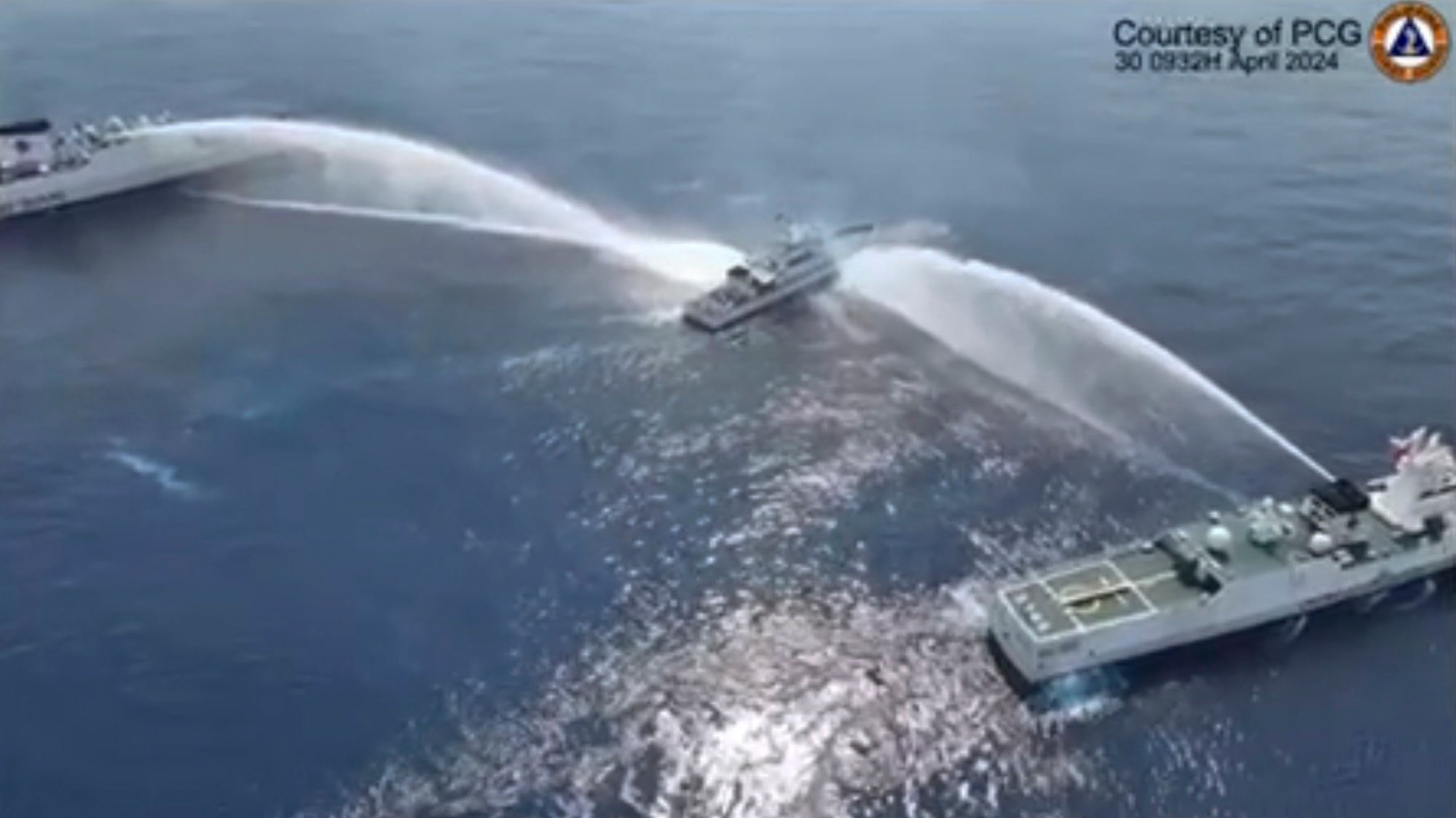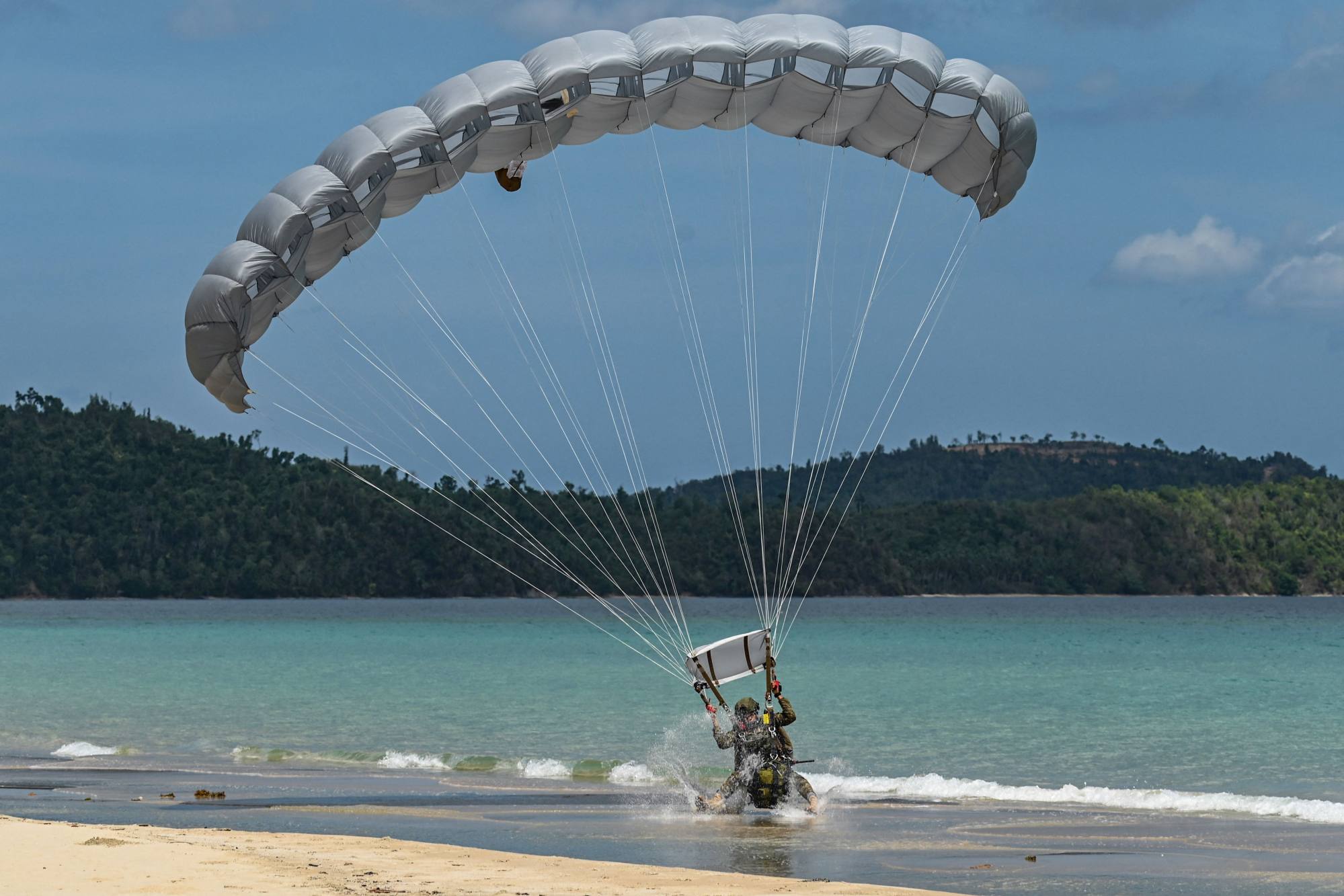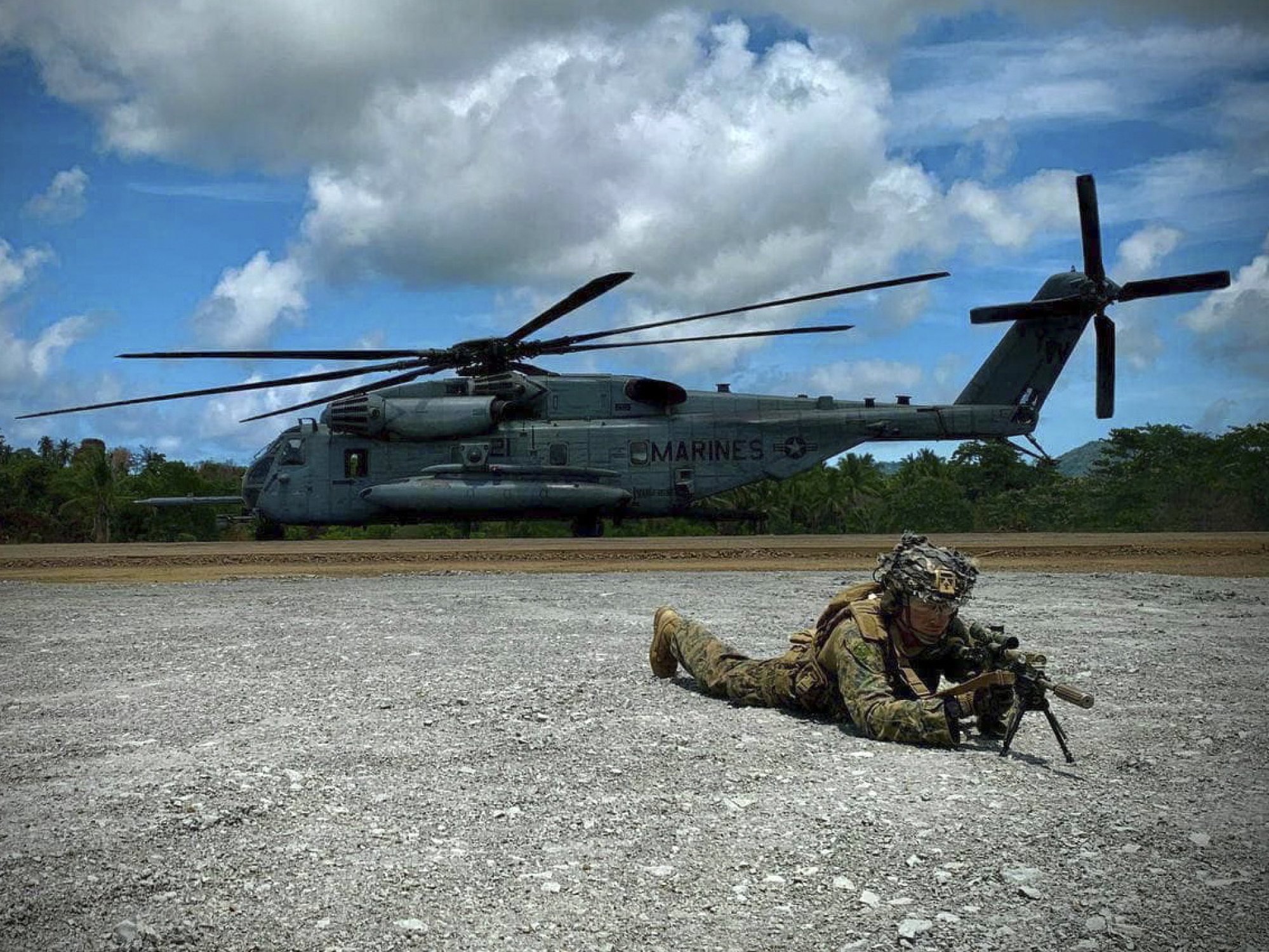
US-Japan-Philippines alliance adds to Beijing’s challenges in East and South China Seas
- Beijing’s latest confrontations with Tokyo and Manila over contested islands come as they strengthen maritime coalition with Washington
- Analyst says tensions in Taiwan Strait, East China Sea and South China Sea are linked as US tries to rally its partners in Indo-Pacific
In just three days, China has been locked in maritime confrontations with two of its neighbours.
In the South China Sea, tensions have flared again between China and the Philippines over contested reefs, while in the East China Sea, Beijing’s dispute with Tokyo over a set of islands resurfaced with a visit by a group of Japanese lawmakers.
On Tuesday, three Chinese coastguard ships fired water cannons at two Philippine vessels in the South China Sea near the Beijing-controlled Scarborough Shoal, known as Huangyan Island in China.

China previously defended its use of water cannons as necessary law enforcement measures. However, the Philippine Coast Guard said on Tuesday the damage to one of its ships was new evidence of Beijing’s “harassment” of its vessels.
Taiwan’s former leader Ma Ying-jeou rejects Japan’s claims to Diaoyu Islands
Ni Lexiong, a military expert and professor at the Shanghai University of Political Science and Law, said the latest incidents in the East and South China Seas occurred against the backdrop of China’s changing external environment.
“They are different from the previous ones in the sense that the US-led maritime alliance that we have been worried about in the past has largely taken shape, with Japan’s help,” he said.
Ni described the trip by Japanese officials to the Diaoyus as “a calculated move” at a time when China’s relations with Japan and the Philippines were worsening.
He said the Japanese lawmakers, who had presumably been emboldened by the emergence of a China-focused military alliance and the Balikatan exercise, “were trying to exploit regional tensions for their own gains”.
Ni said that in addition to deepening military and weapons cooperation with the US, Japan had also strengthened maritime cooperation with the Philippines, including providing over a dozen patrol ships and other military equipment.
Discussions on a proposed Reciprocal Access Agreement between Japan and the Philippines are also expected to be concluded this year, allowing each country to deploy forces on the other’s soil.
China used water cannons as ‘deterrence’ against Philippines, PLA’s Zhou Bo says
Benoit Hardy-Chartrand, an international affairs specialist at Temple University Japan in Tokyo, said it was not surprising that the Japanese lawmakers’ visit would elicit a stronger-than-usual response from China.
“Visits from government officials from either side are exceedingly rare, as they are perceived as escalatory,” he said.
During his visit to Washington earlier this month, Japanese Prime Minister Fumio Kishida said Beijing’s external stance and military actions presented “an unprecedented and the greatest strategic challenge” to Japan and the world.

Hardy-Chartrand said Japan was facing a dilemma over its love-hate relationship with China.
“Japan is trying to toe a difficult line between, on the one hand, deepening its security partnerships in order to counter what it perceives as its greatest challenge, and on the other hand, maintaining stable and fruitful ties with China,” he said.
“These goals are not necessarily incompatible, but certainly difficult to manage.
“For years, it was easier for Japan to pursue these two goals, but it is becoming increasingly difficult to continue as the balance of power has shifted in the favour of China.”
South China Sea: Beijing must ‘step up pressure’ on Manila or risk domino effect
He said Japan’s deepening military ties with the Philippines were in line with its years-long efforts to strengthen security relations with a variety of regional partners, including Vietnam and Australia.
“But we are certainly seeing concerted efforts from Japan, the US and their allies and partners to increase security and maritime cooperation, and from Beijing’s perspective, it does pose a challenge when it comes to advancing its interests in the South and East China Seas,” he said.
But Lian Degui, director of the centre for Japanese studies at Shanghai International Studies University, said it was unclear whether the timing of the Diaoyu Islands incident was related to tensions in the South China Sea.

He said the five Japanese lawmakers were from the right wing of the ruling Liberal Democratic Party and had advocated a hardline stance on the islands to counter China’s claims of sovereignty and repeated incursions.
“Another possible explanation is it is partly due to Japan’s election politics. Such provocative moves are usually designed to grab public attention and any official statement from the Chinese government would serve their purpose,” he said.
Lian also said the situation in the South China Sea, the East China Sea and the Taiwan Strait were closely linked, as the US had tried to hype up China as a threat to rally support from its allies in the region.
Chinese coastguard face off with Japanese politicians in disputed East China Sea
While experts agreed that a real conflict seemed unlikely at the moment, Ni said the situation was particularly concerning for Beijing as it faced an increasingly unfavourable external environment in the Indo-Pacific.
“The problem is that neither side is willing to go to war over the dispute, but at the same time they are concerned that the other side will take advantage of their unwillingness to fight,” he said.
“So they can’t afford to appear weak, especially in front of their audience at home.”


